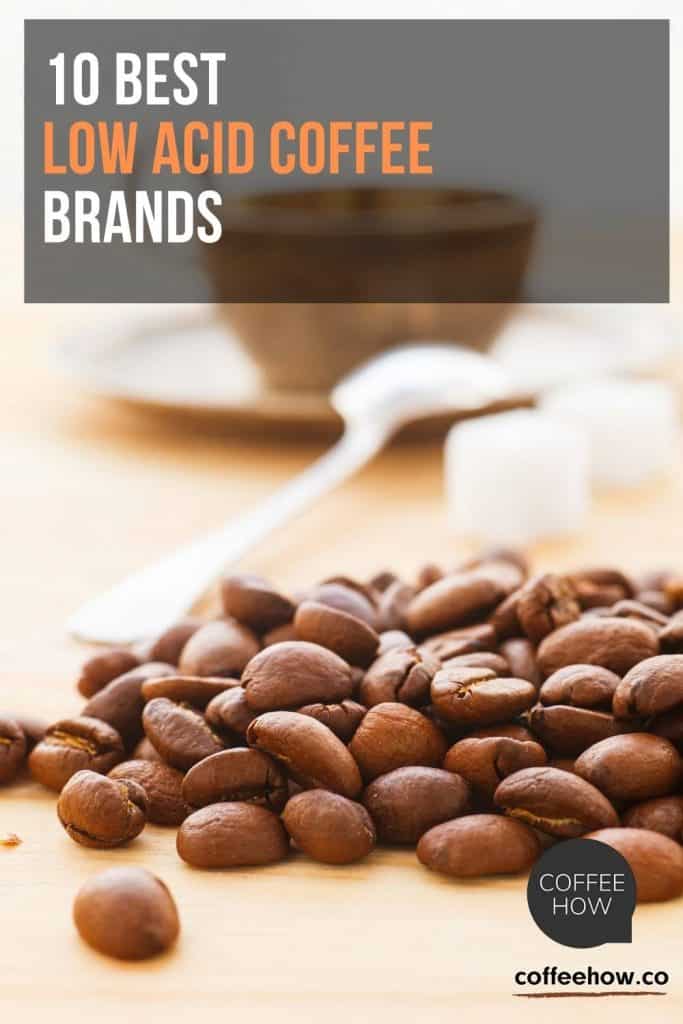fbq('trackCustom', 'view_shop_lifeboost'); var trackEvent = 'shop_lifeboost'; If you're like the majority of Americans, you rely…
It is not a secret, a little of everything in moderation, it’s usually not that terrible. But when coffee is your drink of choice, your body will let you know when that last cup was a little too much.
Caffeine is not the only ingredient that might make you react or act differently. Acid reflux is one of the “side effects” of drinking too much coffee.
The National Institutes of Health estimate that 40% of people in the US suffer from GERD (gastroesophageal reflux disease).
Many people blame caffeine as the primary ingredient that increases symptoms for sufferers of this ailment. Is there an acid free coffee variety, or at least, a reduced acid coffee brand?
Before reviewing the best low acid coffee brands, let’s understand the acid in coffee. Like the ancient philosopher, Socrates once said: “let’s define the terms.”
Is lower acidity coffee that great or desirable?

Acidity in coffee is naturally occurring. In fact, very expensive arabica beans are very acidic, although it has less than its counterpart variety, robusta.
Acid content is a desirable taste. That is what coffee connoisseurs refer to when they talk about citric, plummy, or watermelon-like flavors.
Coffee does not taste like any of these fruits, but they compare sourness or sweetness to them. There is a chart, The Coffee Tasters Flavor Wheel, that aids in making these comparisons.
Coffee beans are very complex. Only 20% of the solubles in coffee beans taste good, 10% are not even worth talking about, and the remaining 70%, are impossible to extract. (At least, not by brewing.) Among the 20%, good solubles are the acids and fruity flavors you enjoy in your cup.
Let’s talk about 2 types of acids that we can find in coffee. Chlorogenic acid and quinic acid. Chlorogenic acids are the good antioxidants that make coffee “a healthy food”. These are components inside the coffee bean. More or less of these components are present depending on the variety of coffee you choose.
When coffee goes through the roasting process, depending on what the roaster wants to achieve, this acid component cooks away. “Usually” a dark roast would have less of the chlorogenic acids. Those distinct flavors disappear in this process.
To make things simple, I would refer to these flavors as salty. The saltier, the more acidic the coffee. I’m sure you’ll find this to make sense once you compare coffee from now on.
Coffee, grown at high altitudes, contains more chlorogenic acids as a general rule. Thus, the term “acidity” refers to the concentration of these acids. Acidity in coffee is actually a wonderful thing. I’ll explain that in a minute. Let’s not blame the wrong acid.
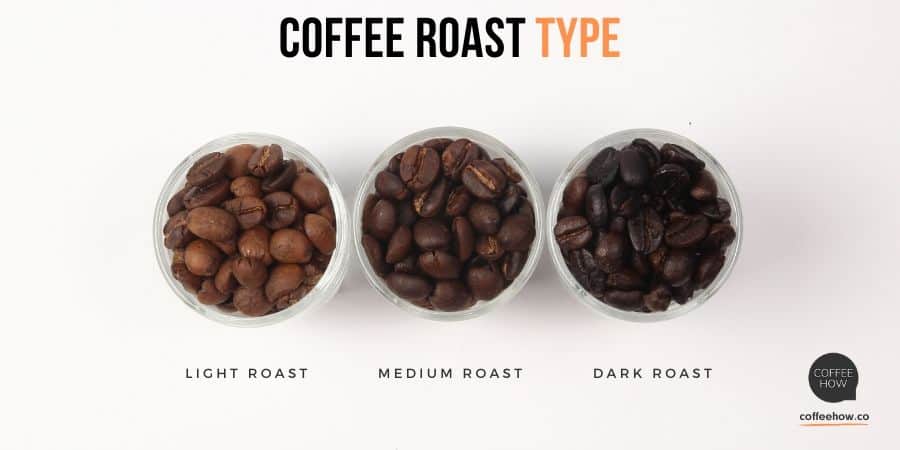
Now, let’s go back to the roasting process. Once the high concentrations of chlorogenic acid die down and cook away, it will transform into quinic acid. That’s the acid we all dread, that makes us sick in the stomach. You’ll also experience quinic acid when coffee is old and left burning on the hot plate for too long. Compare your first cup of fresh-brewed coffee to your second cup from the same pot. You’ll notice a sour, sickening aftertaste.
Now, chlorogenic acid can also make very sensitive people sick. In short, both acids need to be balanced somehow. One is salty the other sour.
Quinic acid is not naturally occurring in coffee. A by-product, or the waste result, of the chlorogenic acid (the one with all the antioxidants) through a process called hydrolysis. I read somewhere that quinic acid is “naturally derived” from chlorogenic acid. No. One results from the other. Perhaps, that is an alternative way of looking at it. The official definition is a by-product.
As an example, imagine a green coffee bean as a wholewheat slice of bread. You can toast it light, medium, or, my favorite, dark charcoal roast. Is the charcoal in my toast naturally occurring, or a result of high heat? You be the judge. The same happens with coffee.

All that said, the key to enjoying coffee is moderation, moderation, moderation. Both acids could trigger acid reflux in sufferers of the condition. Many other foods can trigger symptoms too. It is not yet a proven fact that coffee is to blame.
Also, something to consider is the alkalinity of the water and how it reacts with the coffee. We measure alkalinity in a PH (Potential of Hydrogen) scale from 0 to 14. This measures how much hydrogen is in a solution and gives us its acidity. Ideal water would be a 7, neutral. Higher or lower than that would affect the flavors, but in the opposite way. Lower-quality water gives us a more sour, acidic taste. (Note that coffee by itself ranges between 4.5 to 5 on a scale. It is alkaline no matter which variety.) What! Coffee making can really get scientific.
Something to consider is our own alkalinity, that’s normally balanced, if we were perfect. An imbalance in our system can make some people experience the symptoms.
A medium roast would balance out these main acids. There are other acids, but the ones we want to balance out are the ones already mentioned. You can also buy beans that do not contain so much acid in their natural form. Some single-origin varieties are Sumatra, Ethiopia, Brazil, and Guatemala. Colombian, roasted medium to dark roast coffee, would be fine.
Let’s not also forget, the way we make coffee, and the method of extraction will increase the amount of acidity we get in our cup. A French press method will extract everything we want, and everything we shouldn’t have. That’s why many people use it sparingly, only on special occasions, as it raises the body’s levels of cholesterol and acidity.

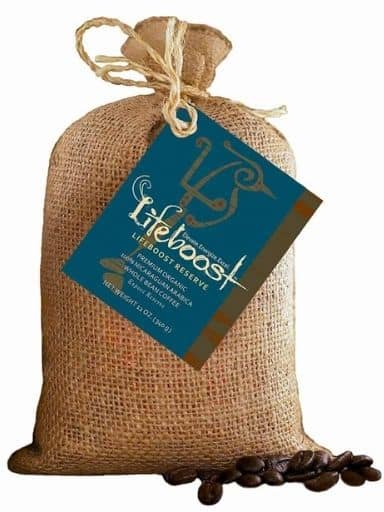
Popular amongst those in quest of low-acid coffee, Lifeboost Coffee focuses on offering the healthiest coffee possible. Their coffee is independently tested for mycotoxins and hundreds of other harmful chemicals. To keep the beans from growing molds or toxic microbes, they dry them to an 11% humidity after washing.
Most of Lifeboost's coffee is single-origin from Nicaragua. This coffee is roasted to 3 different profiles: light, medium, and dark roast profiles. They also offer a Luxe line of (sometimes limited editions) rare and exotic coffees which hail from Africa, Indonesia, and other regions known for growing superior coffee. See our full review and taste test of Lifeboost coffee.
We consider the medium roast "the best of two worlds". The light roast is fruitier and brighter in flavor. The dark roast is the least acidic coffee of their products. It comes down to personal taste.
One thing we like about Lifeboost Coffee is that their "staple" coffee comes from a 6-acre family farm. It's single-origin, unique, and limited. It is not surprising to find a "Sold Out" message when checking out from their store.
You can buy most varieties ground or whole beans, and some varieties are available in K-cups and Go Bags.

Fabula Coffee is a relative newcomer to the world of low-acid coffee. But they're off to a great start. Their commitment to the environment is evident in their partnership with the non-profit organization One Tree Planted.
These beans were richly dark but did not have any oiliness. The standout characteristic was the brew's smoothness and clean aftertaste. This coffee is excellent as an espresso. If you want even lower acid, it does very well as a cold brew. Read our full review and taste test of Fabula Coffee here

For this blend, Volcanica chose beans from around the world that are all low acid coffees. The primary sources are Brazil and Sumatra. It’s a 100% arabica bean blend. Volcanica chose beans grown at lower elevations to lower the acidity. Volcanica roasts this coffee for a long period of time to further lower the acidity. Yet, it is still a medium roast. The result yields a coffee pH of 5.2-5.3.
This kosher certified coffee has flavor notes that include chocolate, nuts, and tangerine. You can get this blend as whole bean or pre-ground. They offer three grinds: drip, espresso, and French roast. You can save money by buying three pounds or five pounds at a time.
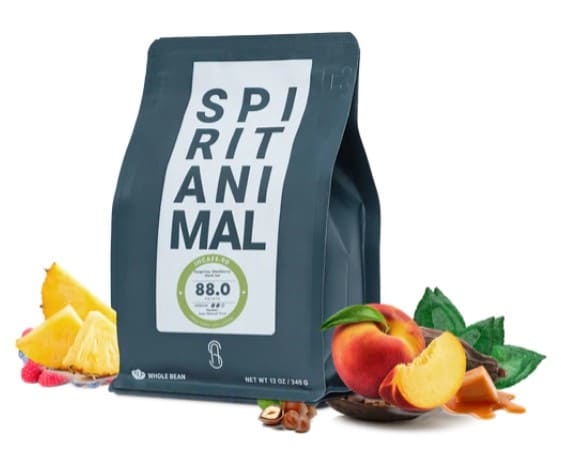
This company has a lofty goal of raising the welfare of the Honduran people, one farmer at a time. The company started in October of 2020 and is already making waves in the specialty coffee industry.
You'll notice the honey and berries aroma when you brew this coffee. It delivers a smooth body in the cup. Flavor notes include tangerine, blackberry, and black tea. These washed process beans have a medium roast. Because Spirit Animal deals exclusively with micro-lot coffees, each bag might have slightly different varietals, origins, flavor notes, and aromas.
Spirit Animal is an up-and-coming coffee roaster and importer. Its coffee regularly receives high marks. The company insists on low-acid coffees grown with environmentally-friendly and organic processes. Spirit Animal values its relationships with coffee farmers and works with them to improve their farming and processing techniques. Most coffee drinkers will enjoy these quality low-acid coffee beans.
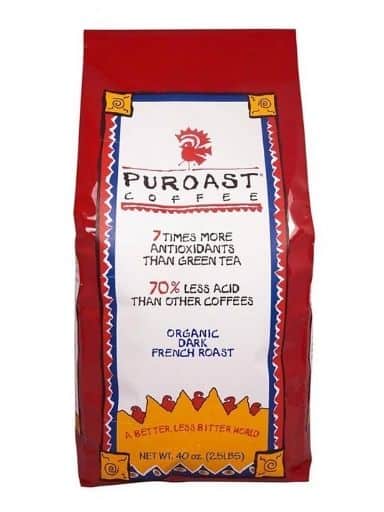
This next coffee claims to be 70% less acidic and has some data to back it up. In their beginnings as a company, people asked why their coffee was so easy on the stomach. The official answer: “who knows”. Well, they now claim to know. They roast like the growers do, with no rush and with much attention to detail.
When you look at these low acid coffee beans, you’ll notice an overall medium roast, with some darker beans, blended in. Maybe this is the way they balance acidity and sourness (chlorogenic and quinic acids).
It makes a fair cup of coffee with a growing following. You can get French Roast, and definitely it won’t have much chlorogenic acid. French Roast is as dark as it gets before burning it (darker than the dark roast). I venture to say, the secret to their reduced acid coffee has to do with the source of their beans. Venezuelan coffee is low in acidity like the coffees from the Caribbean islands. Their soft profile is world-famous among coffee connoisseurs. In truth, Venezuela has an old coffee tradition. Venezuela produces less than 1% of the world’s coffee crop. So, you are getting something unique.

Now we get to the “creme of the crop.” EXPENSIVE is the word, but it has no equal. Geisha coffee is a rare Ethiopian origin variety. It’s very aromatic and somewhat low in acidity. It is very smooth. Grown in Costa Rica, Panama, and Colombia, where the altitude is moderate, it has become one of the world’s most expensive coffees. We don’t want to get into the name debate (Geisha or Gesha). Yet we should clarify that we are talking about the plant harvested in Central America, not Africa. The Costa Rican Geisha crop is the mildest grown in the Americas. It has a reduced value of 30% less caffeine. Although expensive, the Costa Rican variety is not as pricey as its counterpart from Panama.
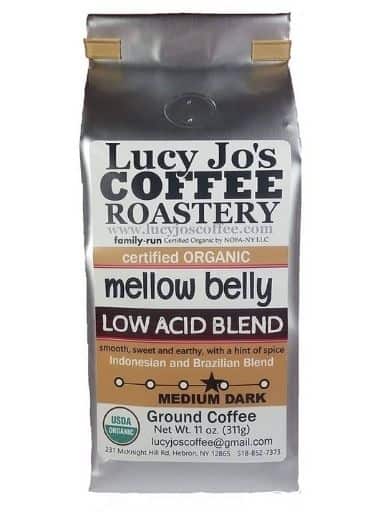
Lucy Jo's is a family-run business that offers a variety of organic blends and roast levels with a few single-origin coffees. Their beans are mainly from Indonesia and South America, but they have some offerings from Africa and Mexico. Most Indonesian coffee is grown at low elevations, making it naturally low in acidity.
Lucy Jo's Coffee has one of the widest ranges of low-acid coffees out there. There's a roast profile to please everyone. A low-acid coffee variety box is available from their website.
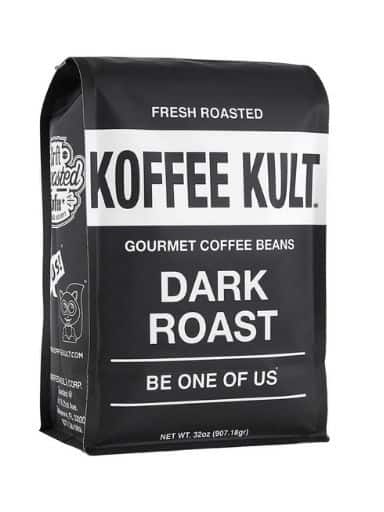
Undoubtedly this is one of my favorites from the 10, a blend of Colombian, Guatemala, Brazilian, and Sumatra. If you are one to enjoy mild coffee, this is the one. We know these varieties of coffee for their smoothness. Don't let their dark color fool you into thinking it will be too bold. It's smooth, but because of that, a great number of people won't like it. Boldest in coffee is another point of debate. As far as acidity goes, it is a low acid coffee.
Koffee Kult sources coffee from organic farms. However, they are not certified organic. The company also believes in supporting the workers and pays women directly and fairly.
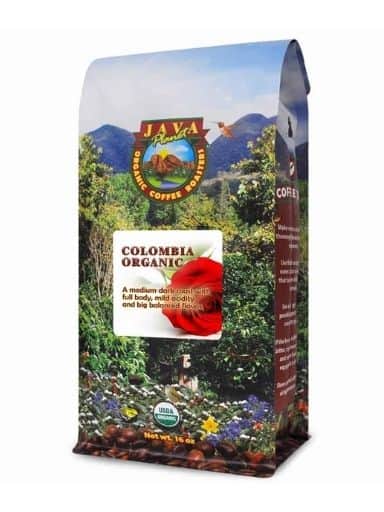
Java Planet boasts a lot of involvement in the organic movement. They make sure their coffee beans are of the best quality as they promote healthy living. Among their blends, you can enjoy a variety of mild, low acid coffee beans and low acid decaf coffee. You can’t go wrong with their 3 top single origin products: Costa Rica, Guatemala, and Colombia. You can also buy Green beans, in case you dare to roast your own. Although patronizing them would help the causes they support, you’ll enjoy a catalog of sweet-tasting coffees.
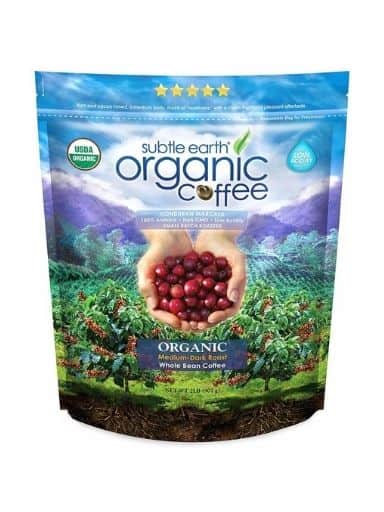
With this last coffee, we see a pattern, another Medium Dark Roast coffee.
It comes from Honduras, grown at high altitude. This means a naturally high content acidic coffee bean. The trick, or let’s call it, the method: roasting dark roast profile to balance the acids. Organically grown and also roasted in small batches to exceed paying attention to detail. If you tasted this coffee lightly roasted, you’ll think it is a distinct coffee.
There’s a perceived subtle, earthly aroma, not uncommon with the organic kind. As you taste it, you’ll notice a bit of a bitter, pungent bite, and yet there’s a sweetness to it. They label it as Subtle Earth Organic Coffee, in case you thought there was a broken link. It’s from the Don Pablo coffee farm.
They also produce a variety of decaf to choose from, using the Swiss water process.
Just a word of caution. That they sell a coffee as organic does not mean that it will have less acidity. Coffee variety, altitude, and to a degree, processing and drying, will affect its acidity. Non-organic coffees of similar origins, roasted just like these brands, would have the same or less acidity.
More low acid coffee brands are available now than ever before. Whether or not the coffee is labeled low acid, you can look at several factors to help select a coffee that is lower in acid. Some factors are innate within the bean and others have to do with how the beans are processed. While you can’t get a completely acid free coffee, you can get close.
Be sure to get 100% arabica coffee. These have less acid than robusta beans. Also, look for beans that are grown at lower altitudes. Coffees from Sumatra, Brazil, and several Central American countries are all low in acid.
Roast level is an obvious way to choose a lower acid coffee. The longer a coffee roasts, the lower in acid it will have. That means a dark roast will be the least acidic. However, roasters can manipulate their roasting process to produce a lower acid coffee with a medium roast.

How you brew your coffee can make a big difference in the acidity of your drink. The things that can affect the final acidity include time, temperature, and grind size.
In general, a longer steep time gets you closer to acid free coffee. Also, brewing at a lower temperature reduces the final acidity. A coarser grind lets you use a lower temperature and longer extraction time and still gives you a satisfying cup. This means that cold brew will give the least acidic brew.
Finally, adding milk to your coffee can lower acidity. But, if you’re lactose intolerant, that defeats the purpose. You can try adding plant-based milk like almond milk to see if it helps reduce your symptoms. Almond milk actually has components that help neutralize stomach acid.

So, why does all this focus on the acidity of coffee? If you’re reading this, you probably already know.
Gastroesophageal reflux disease (GERD) is a severe form of acid reflux. GERD is practically an epidemic in America. Stress and bad diets contribute to acid reflux. But even healthy foods can be acidic. Foods like citrus fruit, tomatoes, and coffee contribute to acid reflux.
We drink so much coffee, that this is an easy place to reduce your overall intake of acidic food and drink. Downing lower acid coffee can also help with issues like gastric ulcers and irritable bowel syndrome.
We give the low-acid crown to Lifeboost Coffee. Their medium roast yields a brew with an enticing aroma and a smooth, medium/light body. The whole focus of the company is on creating healthier coffee. They also support sustainable, organic farming. Their coffee is good for the planet as well as being good for your belly.
Honorable mention goes to Fabula Coffee Espresso Roast. It has many of the same desirable qualities as the coffee from Lifeboost. It may come down to personal preference between these two low-acid coffee brands.
We also wanted to give a shout-out to Volcanica’s Low Acid Coffee. If you don’t have a high-quality burr grinder, Volcanica gives you options for grind size. This brew has many of the same desirable qualities as the coffee from Lifeboost. It may come down to personal preference between these two low-acid coffee brands
All these brands attempt to resolve a legitimate problem. Remember that moderation is always key. If you drink too much reduced-acidity coffee, say 10 cups a day, it might do you as much harm as a couple of cups of the “normal” acidity kind.
Acidity could be a tricky subject. It can be an outstanding trait of a distinct coffee, and yet the bitterness we associate with coffee might result from cooking essential nutrients away. Aren’t we all looking for more balance in our lives? The best balance of two worlds, in this case, acids, will do the trick. If you’ve had to cut back or, gasp, stop drinking coffee, we hope this article can get you back to the elixir known as coffee.
Coffee is usually considered low acid when the pH is 5.5 or higher. A typical cup of coffee has a pH level of around 5. For reference, lemons have a pH of 2, and water is about 7.
The combination of caffeine and acids in coffee frequently lead to heartburn and other gastrointestinal problems. Choosing a low acid coffee can decrease these effects in people with sensitive stomachs.
In general, dark roasted coffee is less acidic than lighter roasts. Some medium roasts can be low acid if they are roasted for a more extended period of time. Of course, the brew method factors into the acidity in your cup. Cold brew coffee is the least acidic brew method.
